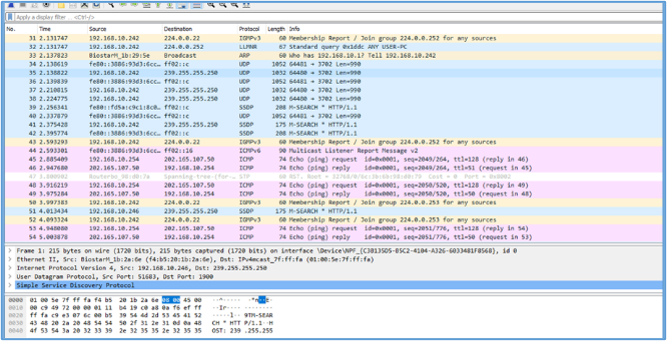The Effect Of Queue Tree On Packet Loss In Bandwitch Management Online Based School Exam
Pengaruh Queue Tree pada paket loss dalam management Bandwitch Ujian Sekolah Berbasis Online
DOI:
https://doi.org/10.21070/joincs.v4i2.1515Keywords:
Bandwidth Management, Per Connection Queue, Queue Tree, Quality of ServiceAbstract
Unequal bandwidth distribution between clients that are used for online tests will cause the quality connection among clients to differ. Especially when some client dominates the bandwidth. The other client will suffer to have a proper connection. Using Queue Tree bandwidth management with the type of Per Connection Queue (PCQ) the distribution of bandwidth can be done evenly among clients. The implementation of PCQ Queue Tree is able to reduce the length of ping time by 90% from 134 ms and 13 ms. Delay is decreased 47% from 17 ms to 9 ms with a very good category. Jitter decreased 41% from 17 ms to 7 ms with a very good category. Throughput increased 53% from 234.582 Kbps to 503.584 Kbps in the medium category. Meanwhile, in the packet loss parameter, there is no difference in conditions before and after the implementation of PCQ Queue Tree because there is no packet loss during the test, which means packet loss condition is in the very good category.
References
[2] A. A. Ritonga and B. Bangun, “Pengembangan Tryout Ujian Online Pada SMK Siti Banun,” J. Ilmu Komput. dan Teknol. Inf., vol. 1, no. 1, pp. 18–26, 2020.
[3] F. Rahman, “Aplikasi Kendali Kesalahan pada Jaringan Komputer dengan Menggunakan Metode Automatic Repeat Request (ARQ),” 2015.
[4] N. I. Dirja, “Implementasi Metode Simple Queue Dan Queue Tree Untuk Optimasi Manajemen Bandwith Jaringan Komputer Di Politeknik Aceh Selatan,” METHOMIKA J. Manaj. Inform. Komputerisasi Akunt., vol. 2, no. 1, pp. 43–50, 2018.
[5] R. Aliansyah, Y. N. Kuanag, M. Kom, A. I. Wijaya, and L. B. Handoko, “Manajemen Bandwidth Dengan Metode HTB (Hierarchical Token Bucket) Pada Sekolah Menengah Pertama Negeri 5 Semarang,” J. Tek. Inform. Udinus, vol. 1, no. 1, pp. 5–7, 2015.
[6] T. Pratama, M. A. Irwansyah, and Yulianti, “Perbandingan Metode PCQ, SFQ, RED Dan FIFO Pada Mikrotik Sebagai Upaya Optimalisasi Layanan Jaringan Pada Fakultas Teknik Universitas Tanjungpura,” J. Tek. Inform. Univ. Tanjungpura, vol. 3, no. 3, pp. 298–303, 2015.
[7] F. Z. Nasihin, A. B. P. Negara, and A. Irwansyah, “Studi Perbandingan Performa QoS (Quality of Service) Tunneling Protocol PPTP Dan L2TP Pada Jaringan VPN Menggunakan MikroTik,” JUSTIN (Jurnal Sist. dan Teknol. Informasi), vol. 4, no. 1, pp. 39–44, 2015.
[8] R. Wulandari, “Analisis QoS (Quality of Service) Pada Jaringan Internet (Studi Kasus : UPT Loka Uji Teknik Penambangan Jampang Kulon – LIPI),” J. Tek. Inform. dan Sist. Inf., vol. 2, no. 2, pp. 162–172, 2016, doi: 10.28932/jutisi.v2i2.454.
[9] M. A. S. Arifin, “Penerapan Bandwidth Management Untuk Dynamic User Pada Mikrotik Menggunakan Per Connection Queue (PCQ),” JATISI (Jurnal Tek. Inform. dan Sist. Informasi), vol. 4, no. 2, pp. 194–198, 2018, doi: 10.35957/jatisi.v4i2.102.
[10] H. Supendar and M. H. Siregar, “Metode Queue Tree Dalam Membangun Manajemen Bandwidth Berbasis Mikrotik,” J. Inf. Syst. applied, Manag. Account. Res., vol. 2, no. 2, pp. 29–34, 2018.






